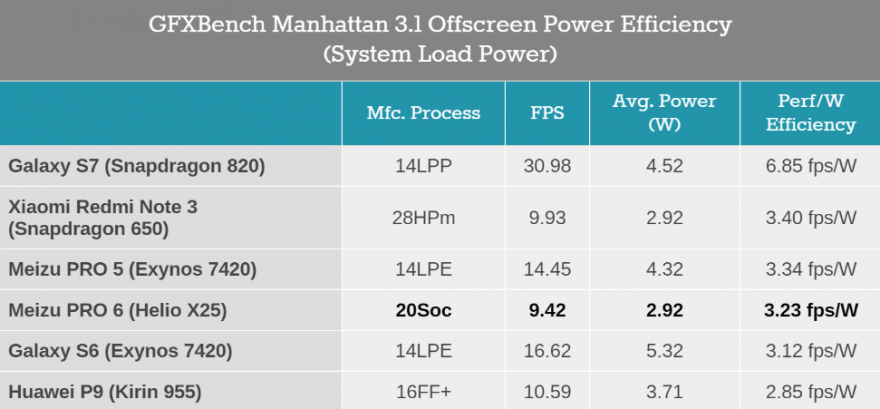The following data sheet shows the power consumption of several mainstream SoC platforms running 3D scenes. Through this we can understand some of the core regulatory modes of the PRO 6 processor. Each test lasts about 1 minute and is undergoing testing. Previously, we killed all the background programs of these phones, closed all wireless connections, and then adjusted the screen brightness to 200 nits. Because of the relatively short test time, the following results are obtained before the GPU overheats and decrements.

In the GFXBench Manhattan 3.1 test, Pro 6's Helio X25 SoC has lower power consumption than other mobile phones. And PRO 6 still uses the TSMC 20nm processor. In the GPU test, the Mail-T760MP8 in the Exyons 7420 is more powerful than the Mail-T880MP4 in the Helio X25 and Kirin 955. More powerful also means more power is needed, but PRO 5 and Galaxy S6 and PRO 6 The power consumption is similar, Samsung's 14nm process is excellent, so that the energy efficiency of PRO 5 and S6 is higher than that of PRO 6.
Another interesting point is that the power consumption and power consumption of the PRO 6 and the Redmi Note 3 are similar, but the PRO 6 started to downshift after 15 minutes of this test, and Red Mi Note 3 never had this happen. The heat conditions of both phones are quite serious, but the larger and thicker body of Redmi Note 3 makes it more superior in terms of heat dissipation.

All mobile phones consume more power while testing GFXBench T-Rex. The Rede Note 3's Adreno 510 GPU consumes the lowest power among all mobile phones, only 3W, while the energy efficiency ratio is between Between PRO 5 and Galaxy S6. The Adreno 530 in the Galaxy S7 Qualcomm Snapdragon 820 stands out for its energy efficiency ratio, which is a 47% improvement over the Snapdragon 810 (our previously tested data) on the Xiaomi Note Pro! Although the power consumption of PRO 6 is not too bad, in this test, its energy efficiency ratio is the most slag.
Photo translation from Anandtech